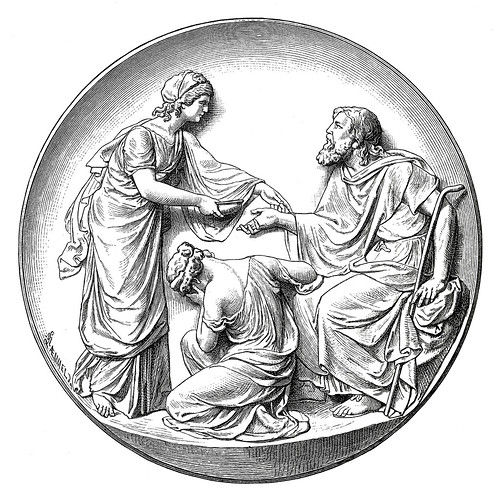Ode to Hope (2024)
for SATB double choir | 00:07:00
by Melissa Dunphy | text by Sophocles, trans. Philip Barnes

Other Arrangements
Commissioned for the Saint Louis Chamber Chorus (Philip Barnes, artistic director)
by William Larson in gratitude for this organization's commitment to choral excellence.
Ode to Hope is a continuation of the SLCC's "Antigone Odes Project."
A highly relevant chorus from Antigone on the pitfalls of hope is set to rich harmonies for advanced double chorus.
Text
Ode to Hope
From Antigone, Stasimon 2, by Sophocles
Translated by Philip Barnes
Blessed are they who live long, far from evils,
Their homes stand free from the shaking of a god.
Yet when his ills fall upon a house without number,
Then does the tide wash over scions of age upon age.
As when the sea surges and throws up the sand
From the deep to the crests of the waves,
Battered and buffeted by harsh winds from the North,
Then the sea beats on every shore
And roars and moans its unending groan.
The Labdakids of old have suffered woes of death,
Woes falling on their homes in every age;
Generations come and go but don’t redeem the next,
And now I witness how a god is rushing its demise.
No atonement or reprieve are destined for this house.
Redemption’s lights have shone their last, [...]
For even now the gods below uproot it, and they tell
A tale of madness mired in blood, through dusty sacrifice.
O Zeus, how might we mortal men
Pervert and curb your power,
Which neither sleep nor tireless months
Can weary hour by hour? [...]
The law you give is absolute
For those who live below [...]
That no-one lives a boundless life
Not knowing a calamity.
Hope, it ranges and deranges
Every man in search of gain,
Yet often uses and abuses
The frail in truth and brain. [...]
We reckon little all those seers
Who told us once and ever more,
How choices bad yet good appear
Whene’er we set our wits aside,
Not knowing a calamity.
Artwork by Martin Lämmel after a bas-relief by German sculptor A. Küpper, published 1879.

 SATB choir
SATB choir